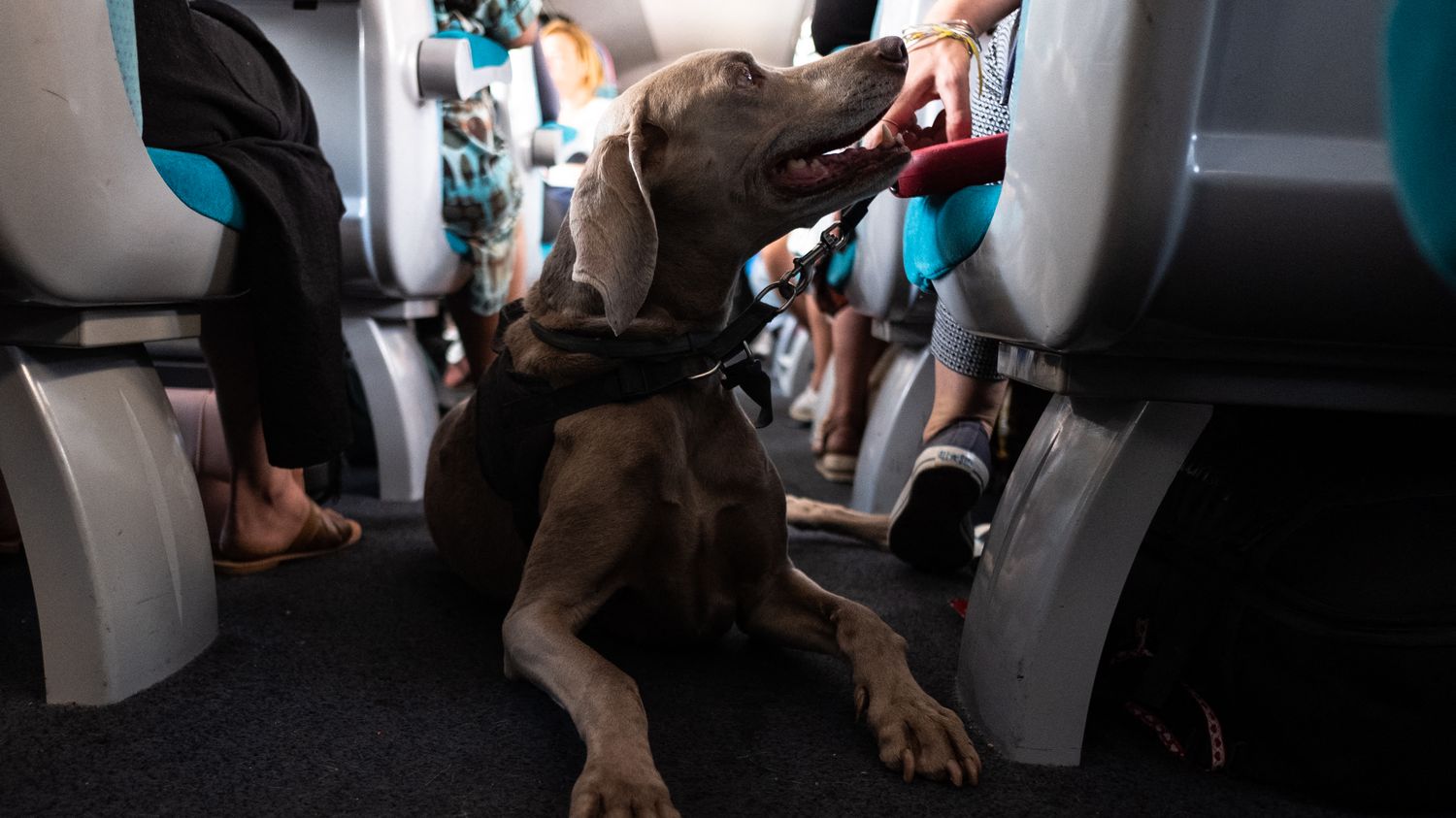The photo of a dog without a muzzle on board a TGV has been the subject of debate since Sunday on the social network X. The SNCF accepts pets on trains, but under certain conditions.
Published
Reading time: 3 min
![A dog traveling on a leash must be muzzled throughout the journey, specifies the SNCF [photo d'illustration]. (ALEXANDRE BRE / HANS LUCAS)](https://www.francetvinfo.fr/pictures/zFxLJPP7S2FwA2hQ6fr2TN6Q1ac/0x197:3798x2334/432x243/2024/02/26/080-hl-abre-1800864-65dc9bf7b1130594493141.jpg)
Internet users have been debating on the social network X since Sunday February 25 about the presence of an unmuzzled dog on board a train. The photo of this four-legged passenger was published by the former deputy for Hérault Anne-Yvonne Le Dain, scandalized by the absence of a muzzle, then taken up by the journalist Hugo Clément, who, conversely, defends the animal and its owner.
Beyond the controversy, what are the rules to follow when traveling with your pet on a train? On its website, the SNCF gives precise instructions.
Traveling in a basket or with a muzzle
On board a TGV, an Intercités or a TER, it is possible to transport a small animal inside a bag or basket, measuring a maximum of 45 cm by 30 cm by 25 cm. This bag or basket must then be placed on the owner’s knees or feet. For a medium or large dog, the trip is done on a leash and the animal “must be muzzled throughout the journey”indicatede the SNCF.
An exception is provided for guide dogs for the blind or assistance who may, if they usually move without a muzzle, not wear one so as not to change their habits. Furthermore, guide or assistance dogs are the only animals accepted on board SNCF substitute coaches, which do not accommodate any other animals.
Get a ticket for your pet
For a year and a half, the SNCF has offered a single price for the majority of journeys: 7 euros per animal, whether traveling in a basket or on a leash. The ticket is reserved on the SNCF Connect website, at the time the owner books their journey, in the “Who is traveling?” section.
Here again, guide dogs for the blind are an exception since they travel free of charge, at the feet of their owner and without a ticket. “It is no longer necessary to issue a ‘free guide dog’ transport ticket. Simply bring the documents proving your guide or companion dog training”specifies the SNCF.
Furthermore, this 7 euro fare does not concern trains on networks managed by the regions (Normandy, New Aquitaine, Pays de la Loire, etc.). Also, for trips on the Intercités at night, “the price is 19 euros in seats, prohibited in berths and free in private spaces”, adds the SNCF. Finally, for Ouigo, the price is set at 10 euros.
Prepare your pet for travel
The SNCF also gives some instructions and advice so that the journey takes place in good conditions. She reminds that the owner is responsible for their animal and must travel with it. “all documents necessary for identification”.
It also specifies that there must be a “tacit agreement” with travelers nearby: “Dogs, cats and other domestic animals (hamsters, guinea pigs, etc.) are allowed provided they have the consent of other travelers”she writes.
The company also advises preparing your trip well in advance to avoid stress for the animal. This involves, for example, checking that the basket is well ventilated and that the animal has enough room to turn around or even “ask your veterinarian for a suitable sedative”.
Ouigo also indicates – not without humor – that “pets are welcome on board (except dolphins, giraffes, lions, etc.)” and also gives some advice, such as getting the animal used to its cage and stretching its legs before the trip or even remembering to bring a bowl.
All these instructions do not necessarily concern trips abroad, for which the SNCF advises you to contact transport companies, or even embassies.
